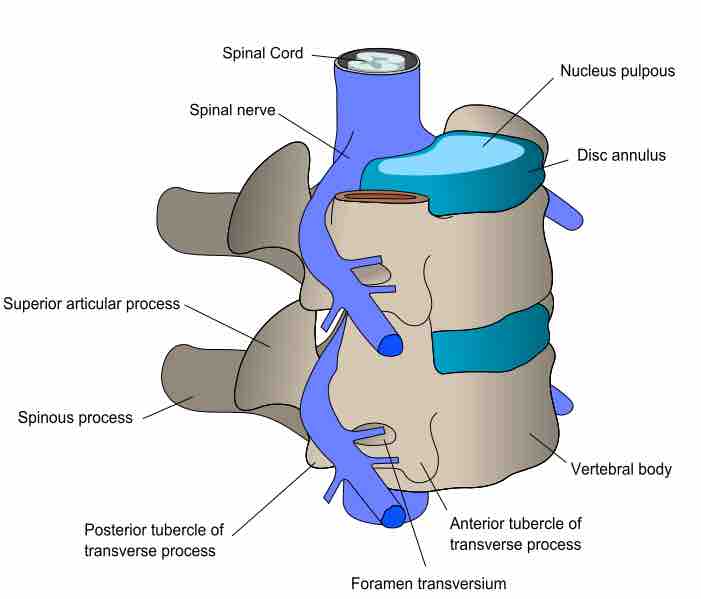When articulated together the vertebrae form a strong yet flexible structure that encloses the vertebral foramen, or opening, where the spinal cord sits. It also provides a base for numerous muscle attachments and articulations with other bones.
The strength and flexibility of this structure is generated by the structure of the individual vertebrae. Comprised of bone and cartilage, the configuration of a vertebra varies based on its location within the body, although there are common features associated with those of the upper region.
A typical vertebra of the upper region of the spine consists of two regions:
- The anterior vertebral body which is the point of articulation between the vertebrae.
- The posterior vertebral or neural arch that encloses the spinal cord.
Located between each pair of vertebrae are two laterally located openings:
- The intervertebral foramina that facilitate access to the spinal cord for nerves and vessels.
- The intervertebral discs that act as ligaments between the vertebral bodies.
The vertebral arch is formed from two, short, thick processes called pediments that extend posteriorly from the lateral sides of the vertebral body, before joining together at the midline with the laminae.

Oblique view of cervical vertebra
The parts of a human vertebra.
Vertebral Processes
There are seven processes that project from a typical vertebra.
Four articular processes originate from the joint between the pedicles and laminae, two point superiorly and two point inferiorly. They interact with the zyhapophysis, a socket for the articular processes, of the adjacent vertebrae to make the spine more stable and to facilitate a small degree of articulation.
A single spinous process projects backwards and downwards from the center of the vertebral arch and it serves as a major attachment point for muscles and ligaments of the back.
The two transverse processes project laterally from the join between the pedicle and lamina and also serve as an attachment point for muscles and ligaments of the back. The transverse processes articulate with the ribs in conjunction with the vertebral body.